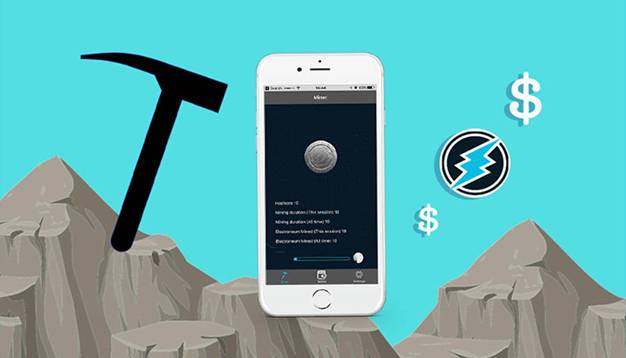What is crypto mining?

Cryptocurrency mining, also known as crypto mining, is the process of validating transactions and adding them to the blockchain, the public ledger of a cryptocurrency. In traditional financial systems, transactions are verified by a central authority like a bank. However, cryptocurrencies operate on a decentralized network, and the verification process is carried out by participants in the network called miners.
Miners use powerful computers or specialized hardware to solve complex mathematical problems that validate and secure transactions. These problems are designed to be computationally difficult, requiring a significant amount of computational power. Miners compete with each other to solve these problems, and the first miner to solve the problem is rewarded with a certain amount of cryptocurrency.
The process of solving these problems is known as “proof of work” because miners have to demonstrate that they have performed a significant amount of computational work to find the solution. Once a miner solves the problem, the verified transactions are added to a block, which is then added to the blockchain. This process ensures the integrity and security of the cryptocurrency network.
Cryptocurrency mining requires substantial computational resources, including powerful hardware and significant electricity consumption. Bitcoin, for example, uses a mining algorithm called SHA-256, which is resource-intensive. As a result, miners often form mining pools to combine their resources and increase their chances of earning rewards.
What is mobile crypto mining, and how does it work?

Mobile crypto mining refers to the process of mining cryptocurrencies using mobile devices such as smartphones or tablets. In traditional cryptocurrency mining, specialized hardware like ASICs (Application-Specific Integrated Circuits) or powerful graphics cards are commonly used due to their high computational power. However, mobile devices have significantly less computing power compared to these dedicated mining rigs.
Mobile crypto mining typically involves mining cryptocurrencies that utilize less computationally intensive mining algorithms, such as proof of stake or proof of capacity. These algorithms require fewer computational resources, making them suitable for mobile devices with limited processing power.
Here are a few types of mobile crypto mining:
- CPU Mining: Some cryptocurrencies, particularly those based on CPU-friendly algorithms, allow mining using the device’s central processing unit (CPU). Mobile devices can contribute their CPU power to mining blocks and earn rewards accordingly. However, the mining rewards from CPU mining on mobile devices are generally low due to their limited processing capabilities.
- Cloud Mining: This method involves using the computing power of remote data centers to mine cryptocurrencies. Mobile users can rent mining resources from cloud mining providers and receive a portion of the mining rewards based on their investment. Cloud mining eliminates the need for mobile devices to perform the actual mining but allows users to participate in the mining process.
- In-Browser Mining: Some websites or mobile apps may employ in-browser mining scripts that utilize the device’s processing power to mine cryptocurrencies. However, this method has become less common due to its potential impact on user experience and the increased prevalence of ad-blockers and anti-mining measures.
How to mine cryptocurrency on an Android smartphone?

Mining cryptocurrency on an Android smartphone is generally not recommended due to the limitations of mobile devices, including limited processing power, battery life, and potential damage to the device. However, if you still want to explore the possibility, here are some general steps you can follow:
- Research cryptocurrency: Choose a cryptocurrency that is compatible with mobile mining and has a mining algorithm suitable for mobile devices. Look for cryptocurrencies that use CPU-friendly or low-power algorithms like proof of stake.
- Select a mining app: Find a reputable mining app that supports the chosen cryptocurrency and is compatible with Android devices. Some popular mining apps include MinerGate, NeoNeonMiner, and Pocket Miner. Ensure that the app has positive reviews and a good reputation to minimize the risk of scams or malware.
- Download and install the app: Go to the Google Play Store or the official website of the mining app and download it to your Android smartphone. Follow the installation instructions provided.
- Create a wallet: Set up a cryptocurrency wallet to store your mined coins. Many cryptocurrencies have their official wallets, or you can use third-party wallets that support the chosen cryptocurrency. Ensure that you keep your wallet information secure.
- Configure the mining app: Open the mining app and configure it with your mining pool details, if applicable. Some apps may allow you to select the mining algorithm or adjust mining settings. Follow the instructions provided by the app and enter your wallet address to receive the mined coins.
- Start mining: Once you have configured the mining app, you can start the mining process. The app will use your device’s CPU or other available resources to mine cryptocurrency. Be aware that mining on a mobile device can generate excessive heat and consume significant battery power, so monitor your device’s temperature and battery level.
- Monitor and withdraw earnings: Keep an eye on your mining progress and earnings within the app. Some apps may have a minimum withdrawal threshold, so accumulate enough mined coins before withdrawing them to your wallet.
How to mine cryptocurrency on an iPhone?

Mining cryptocurrency on an iPhone is not practical or feasible due to several reasons. Apple’s App Store guidelines explicitly prohibit apps that mine cryptocurrency directly on iOS devices. As a result, there are no legitimate mining apps available on the App Store for iPhone users.
Additionally, even if you manage to find an alternative method or an app outside of the App Store, the mining capabilities of iPhones are limited. iPhones are not designed for mining purposes and lack the necessary computational power to compete with dedicated mining hardware. Mining cryptocurrency requires significant processing power, which is better suited for specialized mining rigs or high-performance computers.
Is mobile crypto mining profitable?
Mobile crypto mining is generally not profitable due to several reasons:
- Limited computational power: Mobile devices, such as smartphones and tablets, have significantly less computational power compared to dedicated mining rigs or specialized hardware like ASICs. The mining algorithms used by many cryptocurrencies have become increasingly complex, requiring powerful hardware to compete effectively. Mobile devices are not optimized for mining and cannot generate a substantial amount of hash power, resulting in lower mining rewards.
- Energy efficiency: Mobile devices are not designed for sustained, resource-intensive tasks like mining. The mining process requires a significant amount of computational power, which leads to increased energy consumption. Mining on mobile devices can quickly drain the battery and result in high electricity costs, often outweighing the potential mining rewards.
- Cooling limitations: Mining generates a significant amount of heat, and mobile devices are not equipped with robust cooling systems like dedicated mining rigs. The lack of proper cooling mechanisms can cause overheating and potential damage to the mobile device.
- Mining algorithm changes: Cryptocurrencies often update their mining algorithms to maintain network security and efficiency. These algorithm changes can render mobile mining apps or methods obsolete, reducing their profitability or compatibility with new algorithms.
- Increased competition: The mining space is highly competitive, with large-scale mining operations and specialized hardware dominating the field. Mobile devices cannot compete effectively with these powerful mining setups, resulting in reduced chances of earning mining rewards.
The future of mobile crypto mining
The future of mobile crypto mining remains uncertain, but there are several factors that could influence its development:
- Advancements in hardware: Mobile devices continue to improve in terms of processing power, energy efficiency, and cooling capabilities. As smartphones and tablets become more powerful, it may become more feasible to mine cryptocurrencies on these devices. Additionally, the development of specialized mining chips or modules designed for mobile devices could enhance their mining capabilities.
- Emerging cryptocurrencies and algorithms: New cryptocurrencies may be designed with mobile mining in mind, utilizing algorithms that are less resource-intensive and more suitable for mobile devices. For example, some cryptocurrencies are exploring hybrid consensus mechanisms that combine proof of work and proof of stake, which could allow for more efficient mobile mining.
- Decentralized networks and blockchain technologies: The concept of decentralization is at the core of cryptocurrencies, and the growth of decentralized networks and blockchain technologies could potentially open up new opportunities for mobile mining. As these networks evolve and become more scalable, they may accommodate a wider range of mining devices, including mobile devices.
- Energy efficiency and sustainability: Energy consumption is a significant concern in traditional crypto mining. As the industry moves towards more energy-efficient mining solutions, mobile mining could benefit from advancements in energy-saving techniques and algorithms. Increased focus on sustainability and environmentally friendly practices may also drive the development of mobile mining solutions that minimize energy consumption.
- Regulatory landscape: The regulatory environment surrounding cryptocurrencies and mining can have a significant impact on the future of mobile mining. Different countries and regions have varying regulations, and regulatory clarity and stability are crucial for the development of mobile mining. Favorable regulations that allow for legal and compliant mobile mining could contribute to its growth.
Conclusion
Mobile crypto mining faces significant challenges and limitations that make it generally unprofitable and less feasible compared to traditional mining methods. Mobile devices, such as smartphones and tablets, have limited computational power, energy efficiency, and cooling capabilities, which impact their ability to compete in the mining process.
While advancements in hardware, emerging cryptocurrencies and algorithms, decentralized networks, energy efficiency, and regulatory considerations may shape the future of mobile mining, it is important to recognize that mobile mining is likely to remain a niche activity. Dedicated mining rigs and specialized hardware are better suited for the resource-intensive nature of mining cryptocurrencies.
DISCLAIMER: The Information on this website is provided as general market commentary and does not constitute investment advice. We encourage you to do your own research before investing.
Join us to keep track of news: https://linktr.ee/coincu
Annie
Coincu News























